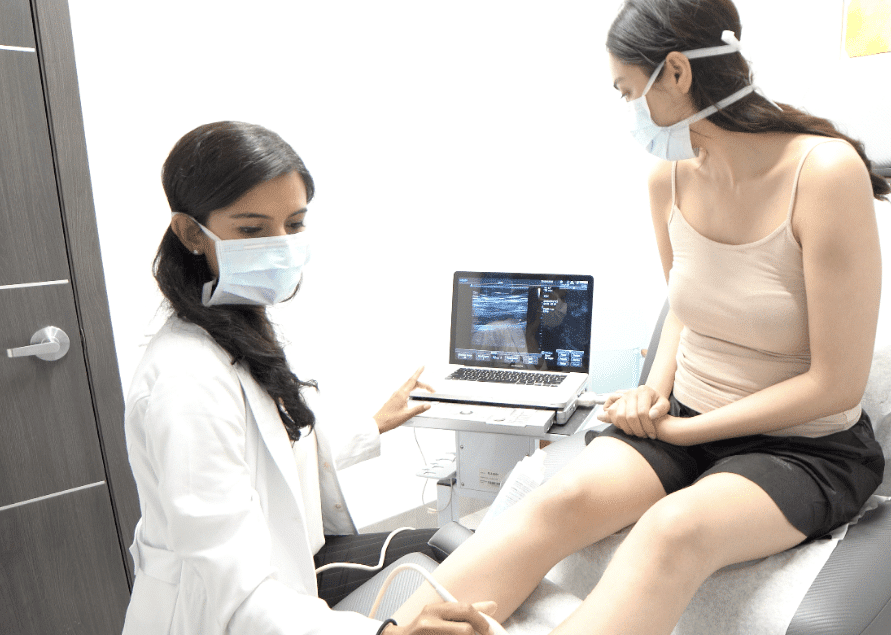Introducing the Best Vein Doctor in Clifton
If you’re reading this article, you’re probably curious about what you can expect from spider and varicose vein treatments. Perhaps you have an upcoming vein treatment, or perhaps you’re simply looking for answers and information. Most people have several misassumptions about spider and varicose vein treatments. There’s a persistent myth that all varicose vein treatments are surgical, whereas all spider vein treatments are cosmetic. Neither of those assumptions is grounded in medical fact.
In actuality, spider veins are often symptomatic of a dangerous medical condition called chronic venous insufficiency, which can lead to leg pain, skin discoloration, leg ulcers, varicose veins, and deep vein thrombosis. As such, in some cases, spider vein treatments can be medically necessary. Furthermore, varicose vein treatments can be performed using minimally invasive procedures that don’t involve hospitalization, downtime, or harsh side effects. Furthermore, each vein treatment plan must be modified to address your specific goals.
Dr. Sareh Rajaee is one of the most talented and experienced vein doctors in the country, and she’s undoubtedly the best vein doctor in Clifton. She completed her Master’s in Public Health at the Harvard School of Public Health, followed by Residency in Vascular Surgery from the Yale New Haven Hospital. As such, she has excellent credentials and a perfect track record, as evidenced by her unanimous 5-star ratings and reviews. She also ensures your vein treatments are physically and emotionally comfortable.
You can find Dr. Rajaee at her spider and varicose vein clinic at 1117 US-46 Suite 205, Clifton, just past the Ford dealership on route 46-E. You may book an appointment online or call the office at +1 973-447-1383. Please continue reading for a step-by-step overview of the spider vein and varicose vein treatment process, from the initial consultation to the recovery.

Step 1: Initial Consultation
Your spider and varicose vein treatment starts with an initial consultation with the board-certified vascular surgeon. The vein doctor examines your leg veins for signs and symptoms of chronic venous insufficiency, such as spider veins, varicose veins, and skin discoloration. The vein doctor also asks you to describe your symptoms, such as leg pain, leg swelling, frequent leg cramps, restless leg syndrome, and exhaustion. These are the early warning signs of vein disease.
Chronic venous insufficiency is the root cause of most vein problems, including spider veins and varicose veins. This is a medical condition wherein your vein valves collapse or malfunction, and blood flows backward to accumulate in the leg veins because of gravity. As more blood accumulates in leg veins, your vein walls start dilating outwards, leading to spider veins and varicose veins. The continued accumulation of blood can lead to numerous complications, such as bleeding varicose veins, leg ulcers, and deep vein thrombosis.
As such, the vein doctor always understands your goals and determines if you have chronic venous insufficiency before curating a treatment plan. Treating spider veins without addressing the root cause would be a wasted endeavor — the spider veins and varicose veins will simply return.
Step 2: Ultrasound Scanning
The initial consultation is followed by a thorough vascular imaging process to confirm the presence or absence of chronic venous insufficiency. The vein doctor will perform an ultrasound scan known as duplex ultrasound, which involves using ultrasound energy to visualize the blood flow in your leg veins. Backward blood circulation reveals chronic venous insufficiency, thus allowing the vein doctor to curate a personalized vein treatment plan.
Step 3: Treatment Planning
The best vein doctors personalize all vein treatment plans according to your unique goals and requirements. They discuss all of your vein treatment options, highlighting their unique advantages, drawbacks, insurance coverage options, costs, and risks. The vein doctor also recommends the ideal vein treatment for you based on your diagnosis, symptoms, and goals. As such, you can make an informed decision about your spider and varicose vein treatment.
Step 4: Primary Treatment
Your primary vein treatment starts with radiofrequency ablation, endovenous laser ablation, or venaseal. These minimally invasive procedures address the root cause of your vein problems — chronic venous insufficiency. They have the same goal of collapsing or neutralizing the diseased vein, thereby allowing blood to reroute into healthier leg veins to restore optimal blood circulation. However, they accomplish that goal using different techniques.
The following is an overview of the minimally invasive vein treatment options:
- Radiofrequency Ablation: The vein doctor makes a small incision on the skin’s surface to insert a catheter that generates thermal energy and destroys the diseased vein.
- Endovenous Laser Ablation: The vein doctor makes a small incision on the skin’s surface to insert a laser fiber that generates laser energy and collapses the diseased vein.
- VenaSeal: The vein doctor injects a medical-grade adhesive into the diseased vein to seal its walls shut, making it get metabolized by the body.
Step 5: Cosmetic Treatment
The minimally invasive vein treatment is followed by cosmetic treatments for superficial varicose veins and spider veins. Ambulatory phlebectomy and sclerotherapy are the best minimally invasive procedures for superficial varicose veins and spider veins. They remove the unwanted leg veins to restore optimal beauty to your legs. However, they don’t address the root cause of your vein problems, so they must be performed after the primary vein treatment.
The following is an overview of your cosmetic vein treatment options:
- Ambulatory Phlebectomy: The vein doctor makes small incisions on the skin’s surface to extract the unwanted varicose veins.
- Sclerotherapy: The vein doctor injects a medicine called a sclerosant into the spider veins to turn them into scar tissues eventually absorbed by the body.
All minimally invasive spider and varicose vein treatments conclude within an hour with no downtime. As such, you can resume most of your daily activities and work immediately after the vein treatment — no hospitalization or downtime.